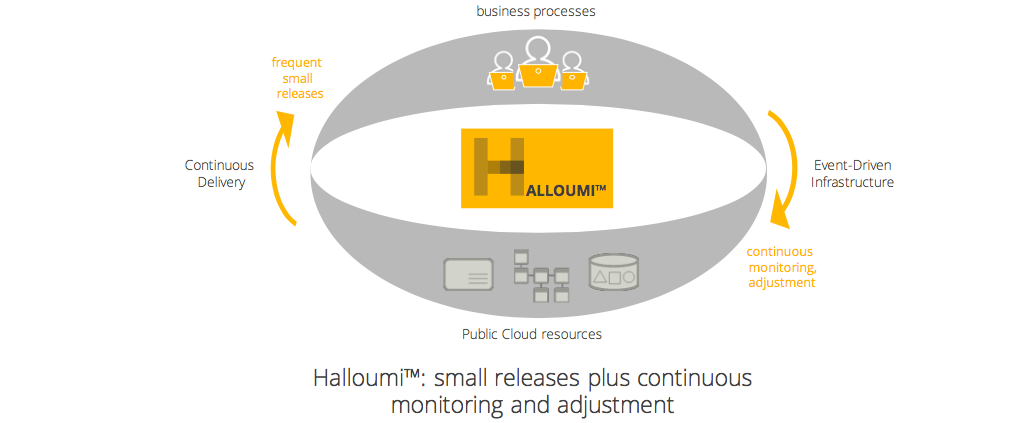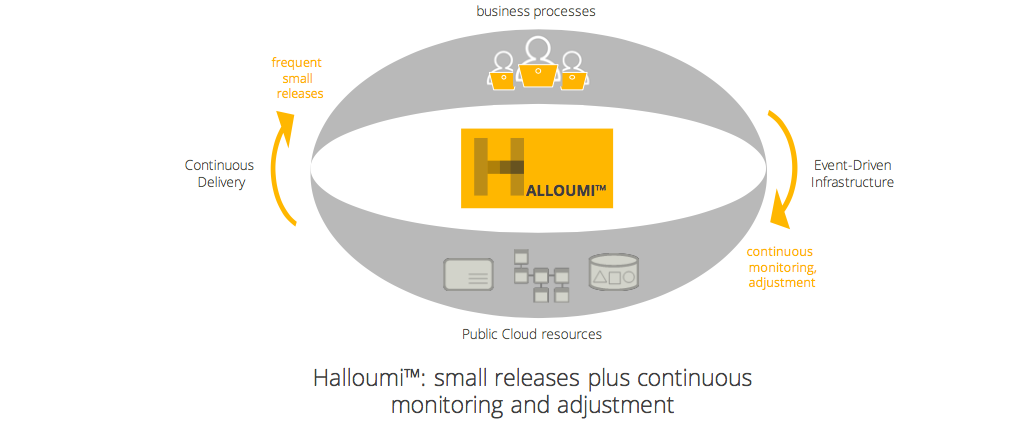At Sentia we're excited to help organizations successfully deliver projects. By including DevOps from ‘Day One’ you will reduce the amount of unplanned work, increase the quality (and delivery time) of services. How? Sentia can help you get going with a project and will slowly handing over those tasks that your teams are able and willing to take upon themselves over time. This calls for a tight bond between those involved in design, develop, orchestrate, and operate – and we can assist you in reaching your goal under our Cloud Consulting & Implementation Services.
Continuous Delivery
Halloumi (Sentia smart solution) allows us to launch smaller releases of code, without any downtime. The development method that we use, goes by the name of ‘Continuous Deployment/Delivery’. Briefly summarised it entails the heavily automated development and delivery of code in manageable small releases, and with surprisingly short intervals.
Our customers use this method for their own software development , whereas Sentia does the same for the virtual infrastructure. Effectively, we’re dealing with a virtual ‘Infrastructure-as-Code’ because Public Cloud-based environments allow for full software-based control.

Our developers work with small, controllable releases with small intervals. Since bugs are more easily tracked down before ending up in Production, the application gains in both availability and reliability. That translates into lower ‘downtime’ and the risks related to it.
Benefits
- Our customers usually need to flexibly follow the quickly changing requirements from their clients. The very short development cycle ensures that a new requirement quickly appears on the ‘To Do’ list of the developers.
- To accomplish this, the development street under Continuous Delivery is automated. Automatic tests take place at various stages; Builds are promoted though most stages of development without human intervention; An archive of earlier versions of customer code and Sentia’s code is generated automatically, facilitating a quick rollback to any earlier version.
- Continuous Delivery helps the individual developer focus on only a few tasks, adding to the person’s productivity and the code’s quality – both of which translate into financial benefits.

